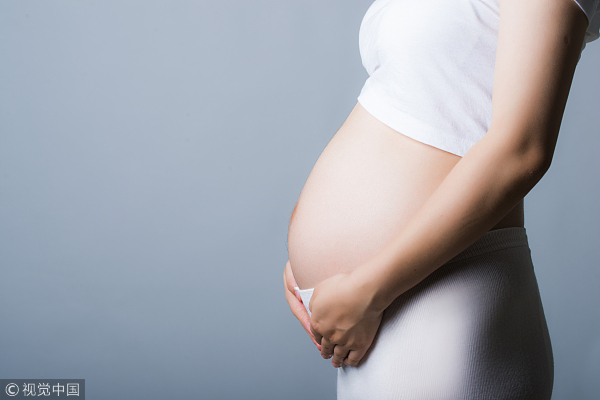Researchers recommend one-year gap between pregnancies


A study published on Monday in the journal JAMA Internal Medicine showed that 12 to 18 months was the ideal length of time between giving birth and getting pregnant again.
Researchers from the University of British Columbia (UBC) and the Harvard T.H. Chan School of Public Health found that getting pregnant less than 12 months after delivery is associated with risks for women of all ages.
Risks to the mother were found only for women over the age of 35, while risks to the infant were found for all women, but were greatest for women between the ages of 20 to 34, according to the study.
"The findings for older women are particularly important, as older women tend to more closely space their pregnancies and often do so intentionally," said the study's lead author Laura Schummers, a postdoctoral fellow in the UBC department of family practice.
The study is the most extensive evaluation of how the role of pregnancy spacing could be impacted by maternal age.
Researchers examined the relationship between risks for mothers and babies associated with pregnancy spacing among 148,544 pregnancies.
Among women over 35 who conceived six months after a previous birth, they found a 1.2 percent risk (12 cases per 1,000 pregnancies) of maternal mortality or severe morbidity. Waiting 18 months between pregnancies, however, reduced the risk to 0.5 percent (five cases per 1,000 pregnancies).
For younger women, there is an 8.5 percent risk (85 cases per 1,000 pregnancies) of spontaneous preterm birth of pregnancy after labor that started on its own, for pregnancies spaced at six months.
For younger women who waited 18 months between pregnancies, however, the risk dropped to 3.7 percent (37 cases per 1,000 pregnancies).
Among older women, the risk of spontaneous preterm labor was about six percent (60 cases per 1,000 pregnancies) at the six-month interval, compared to 3.4 percent (34 cases per 1,000 pregnancies) at the 18-month interval.
"Short pregnancy spacing might reflect unplanned pregnancies, particularly among young women," said Sonia Hernandez-Diaz, professor of epidemiology at the Harvard T.H. Chan School of Public Health.
"Whether the elevated risks are due to our bodies not having time to recover if we conceive soon after delivering or to factors associated with unplanned pregnancies, like inadequate prenatal care, the recommendation might be the same: improve access to postpartum contraception, or abstain from unprotected sexual intercourse with a male partner following a birth."




































